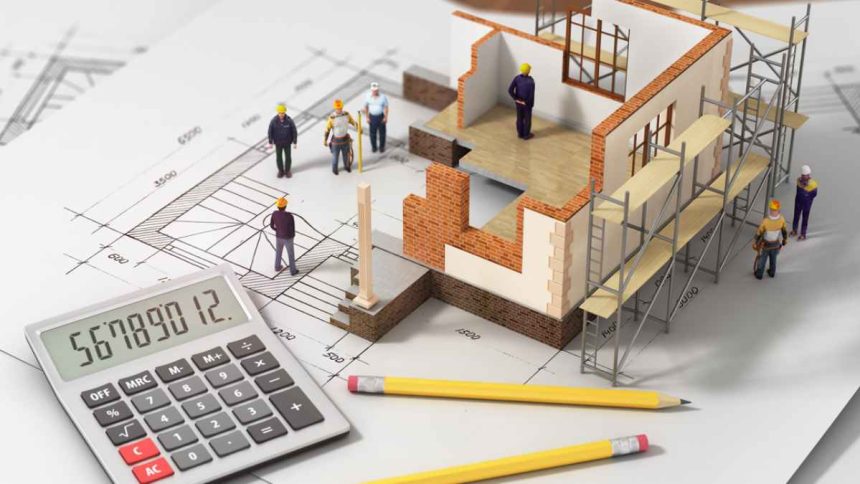The decision to invest in a multifamily home can be an exciting and potentially lucrative business decision. A multifamily home is traditionally defined as any housing that contains more than one unit. This can be a duplex, a three-family home, or, in some cases, buildings with up to seven housing units. These types of properties can often serve two purposes – first, in owner-occupied buildings, it provides a home for you and your family. Second, it can generate a lot of extra income, if managed correctly.
However, before purchasing any kind of multifamily home, you’ll likely need to secure some kind of financing. There are several financing options available, ranging from government-backed loans to more traditional bank loans, but they aren’t all created equally. Here are the basics on five major types of multifamily loans.
1. FHA Loan
There are a couple of government-backed loans that could be right for you if you and the property you wish to purchase meet certain criteria. FHA loans are offered through the Federal Housing Administration and have been since 1934. This loan, created by the Department of Housing and Urban Development, was created to help more middle- and lower-income people become homeowners. When securing an FHA loan, the government insures your loan, which allows a private lender, like a bank, to offer you a better interest rate and loan terms than if you applied on your own.
If you are purchasing a building with four or fewer units, the lender will determine whether you’re qualified based on your income, existing debts, credit score, and an appraisal of the property you wish to buy. If you’re looking to secure a loan for a building with five or more units, its rental income may also be considered.
Pros:
- Low down payments: Because the FHA is insuring your loan, lenders are able to offer much lower down payment rates, sometimes as low as 3%.
- Low closing costs: Similarly, this often means closing costs will be much more affordable than a conventional loan.
- Looser credit qualifications: FHA loans are usually not as stringent on credit scores as some other financing types.
Cons:
- Only available for owner-occupied properties: If you are seeking an FHA loan for a multifamily building, you must live in one of the units.
- Slow: It can take a very long time to secure this type of loan, which can be problematic in very competitive markets.
- Special Safety Requirements: HUD requires homes to be in a certain condition and pass a checklist of safety requirements before a loan is approved.
2. VA Loan
A VA loan is issued through the U.S. Department of Veterans Affairs. It is designed to help active-duty members of the armed forces, veterans, and surviving spouses finance a home. Similar to an FHA loan, these loans are actually issued through banks, not the government directly. Instead, the VA guarantees a portion of the loan amount, allowing your lender to offer you better lease terms.
Pros:
- No down payment: Assuming you have the required VA entitlement, multifamily homes can often be purchased without any kind of down payment.
- No mortgage insurance: Most traditional sources of financing require the buyer to have mortgage insurance. This is a safeguard for lenders if a client defaults on their loan.
- Joint loans: If two or more people with the required VA entitlement are approved for a VA loan, they can take advantage of a joint loan option, which allows them to purchase a building with up to seven units, in contrast to the traditional four.
Cons:
- Service members only: In order to qualify for a VA loan, you must meet the qualifying service requirements, meaning this loan is not available to civilians.
- Live-in owner: To qualify, the owner must occupy at least one unit in the multifamily building.
- Cash store: You must be able to prove you have enough cash to cover 6 months of mortgage payments, to ensure that you won’t default on payments.
3. Conventional Loan
Outside of government loans, there are other ways to secure financing for your multifamily dwelling. Ranging from traditional loans to niche options, there are several ways to obtain funding. A conventional loan is the most traditional loan type. These loans are provided by private institutions, and the government doesn’t secure them in any way. There are many lenders in the conventional loan sphere, but, by far, the two largest are Fannie Mae and Freddie Mac.
Pros:
- Lower interest rates: A conventional loan typically offers interest rates that are quite a bit lower than those offered with other types of financing.
- Longer lease terms: These loans are offered at a fixed interest rate for 15 or 30 years. This means that no matter how interest rates fluctuate during your lease term, yours will not change.
- Income potential may be considered: If you’re able to prove that your property does or will generate income, either with current or future signed leases or 2+ years of rental history, this may be considered when issuing your loan, and secure you better terms.
Cons:
- High down payment: This type of loan generally requires a down-payment of 15-30%.
- Can be difficult to secure: First time buyers may have trouble securing a conventional loan, because they have less collateral to offer, compared to those who already own other real estate or commercial property.
- Time-consuming: These loans require a lengthy application process and may take a long time to be approved.
4. Bridge Loan
A bridge loan is not a long-term financing solution, but instead, just what it sounds like – a short-term loan designed to help your cash flow while securing long-term financing. A bridge loan term usually lasts anywhere from a few months up to three years.
Pros:
- Speed: These loans come through quickly, giving you time to find a long-term solution.
- Flexibility: Unlike other loan types, most lenders are willing to negotiate on things like interest rates, monthly repayment amounts, and the duration of the loan.
- Prepayment is okay: If you secure long-term funding sooner than expected, you’re able to repay your bridge loan ahead of schedule, in full, without any penalty.
Cons:
- High interest rates: Bridge loans traditionally carry much higher interest rates than other loans.
- Fees: Some lenders collect a fee of up to 2% when issuing a bridge loan.
- Can’t be extended: By nature, these are short-term loans. If, by the end of your loan term, you haven’t refinanced or sold your property, you could be stuck paying a huge payment.
Wrap Up
Choosing the right loan for your multifamily investment is an individual decision, and there’s no one-size-fits-all option. Weigh your options, check into your qualifications, and then be confident that you’re making the best choice for your unique situation.
Lynn Martelli is an editor at Readability. She received her MFA in Creative Writing from Antioch University and has worked as an editor for over 10 years. Lynn has edited a wide variety of books, including fiction, non-fiction, memoirs, and more. In her free time, Lynn enjoys reading, writing, and spending time with her family and friends.















